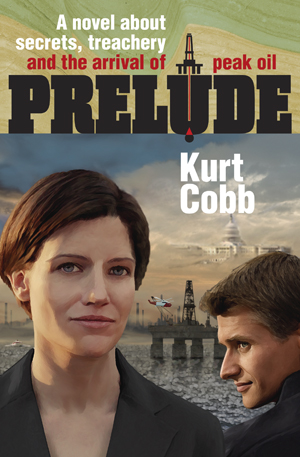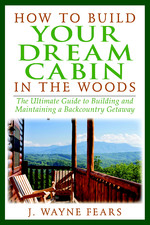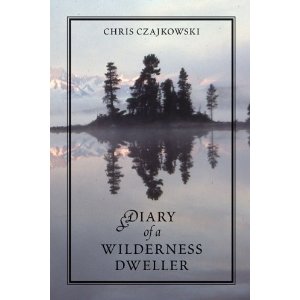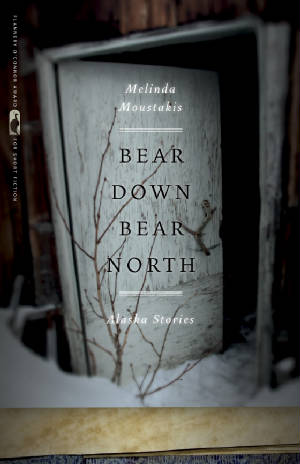|

Not Famous Anymore by
Michael Loyd Gray
Book Review by Zinta Aistars
ˇ Paperback: 260 pages
ˇ Publisher: Three Towers Press, 2011
ˇ Price: $14.95 (Kindle: $9.95)
ˇ ISBN-10: 1595981578
ˇ ISBN-13: 978-1595981578
Elliott Adrian is famous. Very famous.
And he hates that. He hates that and he also hates it—the mystical qualities with which some are blessed
(or cursed, depending on one’s perspective) and that propel such people toward fame. There are entire chapters in Michael
Loyd Gray’s new novel, Not Famous Anymore, devoted to explaining what it is and what that is. Good
for a chortle.
As the story opens, we see Elliott
as a 10-year-old boy, not quite holding his own against a group of adolescent bullies, in mid-swing with a Samurai sword.
A horrible accident is about to happen. It’s a stunning opening and pulls the reader instantly in for the ride, although
the results and ripple effects of the accident with the sword become undertext in the rest of the novel, a reminder of who
Elliott is outside of the limelight, and what he still needs to do to become a man. Because it does not make the man.
The Hollywood scene is appropriately
tacky, even distasteful. When we see Elliott in Hollywood, he’s really nobody you want to know. Ironically, that seems
to be the way of stardom—the people who throw off glitz like an encumbrance are not particularly likeable once you are
in the same room and get to know them close up and personal.
So is Elliott Adrian a character to
whom I never was quite able to warm up to. I didn’t like him much better when he left Hollywood. He was perverse and
shallow and arrogant in the glitz, and he didn’t acquire much more substance as he ran away from fame. He just became
a tad less annoying. He complained about the world that made him wealthy and provided a life of ease, looking for ways to
return to the more or less normalcy of the non-famous, but the whine wasn’t entirely convincing.
Something about that premise didn’t sit entirely well with me. One sees the complaining star waving
away the paparazzi, even occasionally throwing fists at them, but it all seems a bit of extended showmanship. This was, after
all, the fame the celebrity craved at some point? How many screen stars would pursue acting without it? Civic theatres abound,
join the troupe. As for losing fame, I suspect it’s easy enough. We live in a world of attention deficit disorder and
short memory spans. The next big thing, please. Walk away from the money, walk away from the lights and cameras, and I am
pretty sure the world will forget you soon enough if you really are interested in being a regular guy—mind you,
without the Hollywood attitude.
That said, I found Elliott most likeable
when he was mostly alone in the woods with a cat. Camping in some remote southern spot, befriending a lonely cat that wanders
by his campfire and watches him fish, both man and animal become, well, almost endearing. It’s hard to resist a guy
who lets a cat curl up in his lap.
Soon after, the still famous actor
goes home to Argus, Illinois (a fictional town we have seen in other Michael Loyd Gray novels). It’s at least a little
predictable that he will run into a long lost love there who really doesn’t want to have much to do with him. While
cameras follow to record some of this (Elliott still agrees to allow them to shoot film for a “reality” show),
they vanish pretty conveniently when the story does better without them.
Elliott’s long lost love is
single again. She has a daughter. When Elliott shows an inexplicably intense interest in meeting the daughter, it’s
pretty clear to the reader how this storyline will end. No surprises here.
Best moments: Elliott reunites
with a brother who has had a very different life indeed. His brother is fresh out of prison, in fact, and the two have some
unresolved emotions to explore and settle. These interactions are when we get to see Elliott from his more human side, entering
the world of the “regular guy,” which, in fact, can have far more meaningful drama than Hollywood will ever see.
Gray is a strong writer, no question,
but I have enjoyed some of his other work more than this novel. Well Deserved, another novel set in the town of Argus,
showed a sharp skill in both telling a good story and telling it well. Gray’s skill at turning a sentence is evident
in Not Famous Anymore, too, although the story is less intriguing and the characters less colorful. Perhaps it’s
the bleaching effect of the klieg lights.
Regardless, watch this author. I suspect
he may achieve some fame of his own. There’s always room on the shelf for another skilled writer. The balance
of reading more than one of his novels convinces me to pick up the next one to come.

Force of Blood by Joseph
Heywood
Book Review by Zinta
Aistars
• Hardcover: 384 pages
• Publisher:
Lyons Press (September 1, 2011)
• Price: $24.95
• ISBN-10: 0762772840
• ISBN-13: 978-0762772841
Couple days prior to writing this review, I had the pleasure of meeting and interviewing on air the author, Joe Heywood, at Kalamazoo, Michigan's WMUK radio station, the local NPR affiliate. Am I now too star-struck to
write an unbiased review? Nah. I'm convinced the author is fully as tough (and as entertaining, and with the same spicy sense
of humor) as his main character, DNR detective Grady Service, the woods cop of Heywood's now eight-book mystery series. He
can take it.
My bias is of a different kind. I was born with a compass embedded inside me, I'm sure of it by now.
It always points north and that's increasingly the only direction I seem to comfortably travel. Heywood's series is set in
Michigan's Upper Peninsula, and the woods cops in the books solve their mysteries in the thick woods and breathtakingly beautiful
wilderness of the U.P. That's why I picked up the first in the series, Ice Hunter (2001), in the first place. I don't read
mysteries. I do read all things U.P.
That bias could have worked against Heywood, actually. I expect the author of
stories set in my beloved U.P. to do them right. Describe those surroundings accurately, capture the life sense of the "Yooper"
truthfully, bring vividly alive that unique northern territory I have known since childhood. He did.
And in the newest
of the series, Force of Blood, he has - again. The story opens in the Mackinac area, that point between Michigan's lower and
upper peninsulas, in 2007. It's a time when the economy is running thin, and funding for state jobs such as those of the Department
of Natural Resources (DNR) is no exception. As jobs are cut, those dedicated to their work sometimes find themselves working
without pay--and so Grady Service takes on a favor for a friend, checking out the unethical handling of Native American artifacts
on the shores of Lake Superior.
From there, the story takes off at top speed. As he does throughout the series, Heywood
keeps the reader turning pages (or clicking forward furiously on their Kindles) as fast as possible, no turning back. It's
the kind of book you read standing in line, waiting in the waiting room (irritated when it's finally your turn), on your lunch
break, propped against your plate.
Grady Service is a sharp, by now slightly aging, cop who loves walking his woodsy
beat, no matter how high he rises in the ranks. He's tough but fair, a man of integrity. His ongoing relationship with his
arch enemy, Limpy Allerdyce, Yooper savvy criminal and delightfully colorful character, is a treat. Once again, Limpy helps
him solve the mystery, along with a long list of other memorable characters. As usual, their names are hilarious (Heywood
told me he gets many of these gems out of U.P. telephone books): Jane Rain, Belphoebe Cheke, Tuesday Friday, Lacey Lucey,
Delmure Arcton Toliver, Flin Yardley, Odetta Trevillyan, Karylanne Pengelly, Ladania Wingel, Luticious Treebone, Persia Hunger,
Crispin Franti, Marldeane Youvonne Brannigan, Godfroi Delongshamp, Summer Rose Genova, Honeypat, Zhenya Leukonovich, Ozzien
Shotwiff, a cat called Cat, and on it goes.
Yet for all the laughs--oddball names, witty Grady Service lines, hilarious
scenarios (a woods cop partner who paints her own WHAT?)--the topics can also get serious. The title, Force of Blood, alludes
to the call in our blood to be who we really are. Call it genetics, call it cultural upbringing, call it being in touch with
our innermost selves, but no matter what you do to a person to bury their personal reality, it will still win out in the end.
In this case, the force of blood refers to Native Americans, who have historically been repressed and mistreated by the white
man, sometimes forced to abandon their own language and traditions, yet will always bounce back in accordance to their truth.
This particular story is about how to protect and handle the artifacts of an ancient culture.
Also of note in the
storyline is how the DNR handles a 20,000-acre-wide sudden forest fire. It's fascinating to read how such an emergency is
handled, how quickly fire spreads, how people respond each in their own way.
My only gripe about the entire series
is the usual love interest Service entertains. There's always one—or several. This is where the well-researched reality
of the woods cop adventures takes a detour, as these women tend to be, well, what one unfortunately expects from too many
mystery/detective series—the stereotypical hot female with only one thing on her mind. Indeed, it almost seems that
Grady Service has only one conversation with any of his women, even though they are said to be educated and smart and could
surely enjoy relationships of broader scope. Every one of them seems to be identical to the others. At least Service's relationship
with his granddaughter has greater range.
Watch for other fun moments in this book, such as a surprise appearance
of the author himself crossing paths with Grady Service. Drool-worthy pages appear again when Service enters the kitchen.
He's quite the cook. But it's Service's honing in on his target that will keep us coming back for more, and more, and more.
If there are hints in this book that the woods cop is thinking about retirement, we hope it's not too soon. Not for at least
several more books ... I suppose by now I’m more of a Woods Cop groupie than I care to admit!
Joseph Heywood
is a resident of Portage, Michigan, but regularly spends many months of the year in Michigan's Upper Peninsula, riding along
with woods cops as research for his books. He also writes poetry and nonfiction, and paints. If you ever have a chance to
catch one of his readings, do. Priceless.

Prelude:
A Novel about Secrets, Treachery and the Arrival of Peak Oil by Kurt Cobb
Book
Review by Zinta Aistars
ˇ
Paperback: 272 pages
ˇ
Publisher: Public Interest Communications, 2010
ˇ
Price: $14.95
ˇ
ISBN-10: 0983108900
ˇ
ISBN-13: 978-0983108900
Before I’d even opened the cover of Prelude, the novel about peak oil by Kurt Cobb, I knew this was going to be a good read—and an unnerving
one. After all, I had heard the author speak before; we live in the same Michigan city of Kalamazoo. I knew him to be a mesmerizing
speaker about all things energy and global resources, something of our local Al Gore, and I also knew that every time I heard
him speak, I went home feeling shaky about our planet’s future. Shaky, but also resigned to do my part to make things
better.
I’ve also been a long time reader of Cobb’s
intelligent and meticulously researched blog, Resource Insights. Every time I log on, I learn something new and find myself yet again rethinking how I use energy.
Now, Cobb has put his research and insights into a novel, calling it fiction, yet this story of intrigue and espionage is
based on what he has learned about how we use energy.
Prelude
is a story about Cassie Young during 2008, employed at an important Washington D.C. energy consulting firm. Her firm is forever
making announcements about how deep go our energy reserves, but then Cassie discovers a report hidden from public scrutiny.
The report reveals a looming energy crisis based on manipulated figures by major world oil exporters, and the crisis is not
at all at a comfortable distance. Peak oil is a reality to which society is turning a willfully blind eye. After all, we live
in a world where oil is our lifeblood, and if we should run out of this limited resource, the world as we know it would come
to a screeching halt.
The fast-paced story takes Cassie to Canada to take
a closer look at tar sands, about which we are hearing today as another resource for oil. She meets Victor Chernov, a former
oil trader, who reveals yet more damaging data to her. Forget about Cassie’s career … she is soon running for
her life. This kind of information is too big for one person to carry.
Who will listen? What does this mean for civilization
as we know it? Consider this excerpt:
“Suddenly
for Cassie the whole world had now become one big manifestation of energy, much of it in the form of oil. Humans were not
builders any more. They were just the guiding hands for the flow of petroleum that came from deep underground and then went
deep into the life of society. Petroleum, she knew, was doing the lion’s share of work for the world.
“Cassie
had understood all this intellectually before. She even knew the energy industry was the key industry in society. Nothing got done without energy. But she had never before understood it so concretely as
she did today. She wondered if she could ever go back to looking at the fountain in Dupont Circle and not think of the energy
needed to pump the water, or see a farm field and not think of the oil that goes into the tractors and the combines, or even
enjoy simply reading a book without thinking about the energy used to cut the logs that were moved to the mill and made into
pulp and then into paper that was then shipped to the printer and bound into books that were shipped to the bookstore.”
(Pgs. 153-154)
I’ve passed Prelude along to others interested in doing something about ecology and especially those who aren’t, and
recently sent it to my son as a gift … even as I considered the energy expended to do so. The novel is well written,
packed with fascinating information, and concludes with a glossary and questions answered by the author for those who wish
to learn more.
Kurt Cobb is an author and columnist who speaks
and writes frequently on energy and the environment. His column appears on the Paris-based science news site Scitizen, and his work has been featured on Energy Bulletin, The Oil Drum,
321energy, Le Monde Diplomatique, Common Dreams, EV World, and many other sites. He is a founding member of the Association
for the Study of Peak Oil and Gas—USA, and he serves on the board of the Arthur Morgan Institute for Community Solutions.
He maintains a blog called Resource Insights.
An author interview appears in this issue of The Smoking Poet.

How
to Build Your Dream Cabin in the Woods by J. Wayne Fears
Book
Review by Zinta Aistars
ˇ
Format: Kindle Edition
ˇ
File Size: 14576 KB
ˇ
Print Length: 240 pages
ˇ
Publisher: Skyhorse Publishing, 2010
ˇ
Sold by: Amazon Digital Services
ˇ
Price: $9.39
ˇ
ASIN: B0056GXI8E
So many of us have a dream cabin in the woods envisioned
in our minds—I do, too. Most of us never do get to realize it, but it can still be fun to dream. Actually, as I write
this, I seem to be nearing the realization of my dream, and so I picked up the Kindle version of How to Build Your Dream Cabin in the Woods to learn more.
There is much to learn. This is not the first such
book I’ve read, but it would be a great choice as an introduction to learning about log cabins. J. Wayne Fears writes
in a manner that is easy to follow and understood by anyone, not just someone practiced in construction. But then, the book
isn’t really about the actual construction (a glossary does list log cabin builders and kits). It is more of an introduction
to the dream, familiarizing the reader with all the considerations to be made going into such a project.
Not least among such considerations, the author
notes, is thinking through if one truly appreciates a life of solitude and seclusion. Log cabins tend to be built in secluded
areas of wilderness, and that does not mean a life of convenience transported from the suburbs. He suggests trying out such
a lifestyle if even for a short vacation, to be sure that one is comfortable with it. There are trade-offs to be made, but
the benefits can be tremendous. He recounts the story of a couple who longed for a log home in the woods, built one, moved
in, only to find they couldn’t bear the disconnect from the life of convenience and social connection to which they
were accustomed.
Fears also makes it clear that this book is not
about log homes. It is about log cabins. Anyone who has started to even scratch at the surface of learning about log cabins
knows that it is difficult to find anything about actual cabins, that is, 1,000 square feet and less. Paging through contemporary
magazines about log homes, one finds log McMansions, not cabins.
If, however, one does want a cabin, and a true wilderness
lifestyle, Fears goes over many important considerations. He writes about choosing a good site and how to go about buying
it, what inspections to get first. He writes about different kinds of building materials, pros and cons, from logs to roofing
materials. He writes about the benefits of wood stoves over fireplaces, and encourages not installing electricity at all,
but gives advice if one does want to plug in from time to time.
And more: how to split wood, how to install good
lighting and not cause cabin fires, how to create a shooting range that is safe. He also writes about how to have a good water
system, but once again, staying with the wilderness experience, he leans toward the outhouse, explaining how to keep it relatively
maintenance free and always clean with a few simple moves. Composting toilets got their coverage, too. The author even covers
cabin cooking, more times than not done outdoors on a fire ring, and he includes plans for building the perfect bench by the
fire. Not to be missed are rules for visitors and preventing vandalism when you are back in the city.
Photographs are beautiful and helpful, often showing
cabins the author himself has built, and quite a few simple blueprints are included, mostly for cabins 400 to 800 square feet
in size. Links are embedded in the text, especially convenient in a Kindle version, and I followed up on several of them,
learning even more.
Smart, clearly written, sensible—this is a
book to take the dream into reality. Enjoy.

Diary of a Wilderness Dweller by Chris Czajkowski
Book Review by Zinta Aistars
ˇ
Paperback: 207 pages
ˇ
Publisher: Harbour Pub Co, 2006
ˇ
Language: English
ˇ
ISBN-10: 155017357X
ˇ
ISBN-13: 978-1550173574
When people read and
heard about what Chris Czajkowski, a woman in her early 40s, had achieved in the wilderness, they exclaimed: How brave! How
courageous! Ridiculous, Czajkowski would respond. To her understanding, she had achieved nothing more than many of us might,
had we the mind to do so. “Skills will always find a way of arriving, it is the attitude that is important,” she
writes in Diary of a Wilderness Dweller. “If you think you can do something, it will happen.” (Page
170)
What Czajkowski especially
shook off were the comments that began with “especially for a woman.” And that is the end of that discussion.
She’ll have none of it.
Yet what Czajkowski describes
in her book, one of a series she has written about making her life in the northern wilderness (British Columbia, Canada) befits
the unrealized dreams of many. She has left “civilized” society far in the distance, making her way into the mountains
and woods, where she builds not one, but two log cabins entirely on her own.
For those who have been
drawn to the books of Anne LaBastille, another woman who lived in a log cabin in the Adirondacks, I would say that Czajkowski’s
are far superior. LaBastille had help building her cabin, and her books veer into personal essays on self-publishing rather
than wilderness living. Czajkowski truly is a solitary traveler into the woods, and she stays entirely on task.
Then again, when I crave
literary beauty in nature writing, I reach for Annie Dillard. Czajkowski certainly has her moments of artful and literary
description, but her tone is mostly one of telling how to get the work done, what obstacles get in the way, how she endures
and overcomes them. At times, that made me as a reader feel like I didn’t really know the writer of the diary as a person,
even as I knew the world around her in detail.
Czajkowski begins her
adventure with a moment of considering her “madness.” She has left her truck at the end of a logging road twenty
miles away. She has hiked through unmarked forest and over a mountain to a piece of land beside an unnamed lake. She is going
to build a log cabin very nearly with her bare hands, using just a few tools she has carried in or that a small airplane later
delivers on the lake. So is she crazy? By end of the book, in retrospect, she writes that this adventure may have seemed mad
and risked all, but had she not done it, she would have missed … everything. This is the kind of living that gives her
life its value and its meaning.
Much can be explained
by her musings midway through the book (pages 88 and 89): “People are always asking me why I live the way I do …
I am not ‘sacrificing’ the outside world … I do have the enormous satisfaction of choosing what I want from
it. The material things like television and washing machines, which most people take for granted and which, for some perverse
reason, are used to measure our ‘standard of living,’ have never been as important to me as my surroundings.”
She explains that it
is not that she is so very unsocial—she likes people and eventually creates a business out of her wilderness living
by guiding wilderness tours—and she is not averse to tapping into some convenience if it is readily available, but when
it is not, and she has the wilderness in trade, that is what she chooses.
“The words ‘remote’
and ‘isolated’ to describe my way of life are city conceits. ‘Remote’ means ‘apart from’
and I am indeed apart from the city and other people. But I am very close to nature and the way the world functions; in this
respect it is city folk who are remote.” (Page 89)
Silence is one of her
draws. She relishes the sounds of nature rather than the sounds of civilization, and muses that most people never experience
it in the cacophony of machinery, automobiles, industry, stereos and conversation.
All ways and styles of
life, Czajkowski writes, have their price to pay. Whatever one chooses is to choose against something else, and so we must
choose what it is that we value and what we are willing to do without. Although at times she is “terrified” of
her choices, facing extreme weather, predatory wildlife and other challenges and obstacles, she overcomes her fear to obtain
a life that she can value.
In addition to writing
her story, Czajkowski is also a visual artist, and her diary entries are here and there enhanced by skillful drawings. On
art, she writes: “We live in what must be the only society in the world to separate art from life and condemn it as
an unnecessary frill or, even worse, a hobby.” Yet everyone is an artist, she insists, and we shouldn’t try to
subdue that natural part of ourselves. We use our sense of art when we decorate our homes or choose what clothes to wear.
Why not relish our creativity and give it full rein?
Even if the author eschews it, the
reader can’t help but admire her tenacity and skill at making do with what she has around her. She not only fells tall
trees for the logs to construct her cabins, but hauls them over great distance, cuts them into boards for her floors, and
fashions all parts of her cabins from them. She installs a reconstructed stove for cooking and heating, moving that, too,
over long trails by herself. She hikes many miles through the most blustery cold and survives the night in spite of only partial
shelter and one very curious and powerful bear. I wouldn’t say “even for a woman” when I read this diary—I
would instead say “what a woman!” in respect for her willingness to follow her wilderness dream.

Bear Down, Bear North: Alaska
Stories by Melinda Moustakis
Book Review by Zinta Aistars
ˇ
Hardcover: 144 pages
ˇ
Publisher: University of Georgia Press (September
15, 2011)
ˇ
Price: $24.95
ˇ
ISBN-10: 0820338931
ˇ
ISBN-13: 978-0820338934
It’s been many years, too many,
since I set foot in Alaska, but opening the pages of Melinda Moustakis’ debut collection of character-linked Alaskan
stories brought me back instantly into that stunningly wild and beautiful landscape. Bear Down, Bear North is a series
of vignettes about life in Alaska, some as short as a few sentences, written in resonant and poetic language. Poetic, yet
not flowery. This is the poetry of northern wilderness, sparse, even cruel in its precision, yet breathtaking.
Consider the opening lines of the
vignette titled “Trigger”:
“You were conceived
on a hunting stand, they say.
“Which means: We had
no other place.
“The homestead is full
of my mother’s siblings. On the stove, a pot of potato chow big enough to feed twenty. See my mother, back roughed against
the wooden platform in the trees. See my father, finger on the trigger—in case.
“You have to gut a
moose right away, they say, or the meat rots in its skin.
“Which means: We couldn’t
keep our hands off each other.”
And so, before you’ve even properly
stepped over the threshold to enter this world Moustakis has word-painted, you are already catching your breath, spanning
the horizon, perhaps looking for an exit in case of sudden danger, but more likely, a shadowy corner so you can stay as long
as possible, surveying the scene of these hardened and colorful characters. Your eye lands on one wonder after another, and
from these, you draw your story.
Moustakis writes in second person.
She addresses you, wrapping you inside her main character so that lines blur, so that the effect of the surroundings
is that much more immediate. Not many can pull that off. Second person is a literary least favorite stance, left for the highly
skilled, and Moustakis is that.
With each vignette, both place and
person is brought to harsh life. You begin as a little girl, but already schooled in survival. We’re not talking
pigtails. This is a family, three generations, of Alaskan homesteaders, of fishermen and fisherwomen, trappers and hunters.
Your mother smokes a Big-Z cigar to keep the mosquitoes away while fishing. Your brother shoots himself in the chest after
too many swigs on the vodka bottle. Your daughter has perfect aim. Even the fish in these vignettes speak to you, so alive,
so red, so struggling against the elements.
“The days are long
and thin. The salmon keep to the shallows near rotting trees. With reaching fingers, the Kenai tugs at their tails, drawing
them to the channel. The salmon wrestle the water, tap their last beats of blood and when the river wins, they drift and fodder
downstream. Their bodies are carried, broken, and red to the currents.”
Which, above, is an entire vignette, titled “Run.” The beauty of these short pieces is beyond
argument; the danger, which may indeed add to the beauty, is that Moustakis has dared to write by using words and lines and
language in almost equal leverage to the space between. The space between leaves room for the reader to consider the story,
and there are times that this technique can leave one feeling a bit stranded, disconnected, carried away by the current. At
times, I lost my thread, wondering even if I was reading about animal or human—who was this? In what role? Yet that
same current would pull me irresistibly forward, and I very nearly didn’t care if I knew or not. Just wanted more.
It is such literary artistry that
will put Moustakis quickly on the literary map, outline her name in stars, bullet it as a name to be watched closely. It may
also keep her from bestselling tables for the mainstream reader who seeks a more traditional storyline. I would hope that
particular seduction will fall flat for the author. She is a trailblazer, a unique voice, a literary leader. I suspect she
writes as she writes because all else, anything less daring, would be impossible to her.
For those who hold fine literature
in high esteem, Melinda Moustakis is indeed a name to watch. She’s not just going places. She is already there.
Bear Down, Bear North
won the Flannery O’Connor Award for Short Fiction. Moustakis was also recently named in the “5 Under 35”
authors of 2011 by the National Book Foundation. She is a visiting assistant professor at Pacific Lutheran University in Tacoma,
Washington.

Naked in the Stream: Isle Royale Stories by Vic Foerster
Book Review by Zinta Aistars
ˇ
Paperback: 288 pages
ˇ
Publisher: Arbutus Press, 2010
ˇ
Price:
$19.95
ˇ
ISBN-10: 1933926228
ˇ
ISBN-13: 978-1933926223
Michigan’s Upper Peninsula, the U.P., is easily one of my favorite areas around, and within
that, the Keweenaw Peninsula. On a clear day, standing on the Keweenaw and looking across the sparkling mirror of Lake Superior,
one can just see the outline of Isle Royale on the horizon. Somehow, getting there has long evaded me, even as I have lived
on and now often travel to the Keweenaw to rejuvenate my spirit. That must change, and soon—and so, in that effort to
at last make that wilderness adventure happen, I decided to pick up a book about Isle Royale written by someone who really
knows the island.
Vic Foerster, arborist by trade, is a resident of Grand Rapids, Michigan, in the Lower Peninsula,
but has been making annual trips to Isle Royale for nearly 40 years. So many wonderful and wild places to go, but there is
no place as pristine, he says, as Isle Royale for the true wilderness experience. (I had the pleasure of interviewing Vic
Foerster in December 2011 for a local radio station, and got to ask questions that go even beyond what he shares with readers
in this collection of 18 stories.)
Naked in the Stream is reading pleasure. Foerster’s writing style is clean and clear, flowing
as a river, and his stories educate and enchant, inspire and amuse. He is not afraid to look a tad foolish, as he writes about
his initial lack of expertise in the wild, unable to sleep in his flimsy tent as two randy moose do a boisterous mating dance
just outside. He often lets Ken, his frequent travel companion and fishing buddy, take the limelight and outshine him in ability
to catch the bigger fish sooner, or withstand the obstacles and challenges of the trail.
There are some great fish stories in this collection, but also insights into the differences between
camping in solitude, camping with a best buddy, or camping with one’s child. Since the stories cover such an extended
time span, there are interesting differences to observe in the experience (such as few if any female campers to later become
predominantly female campers), although these usually pertain to the traveler and, happily, not to the island itself, which
has more or less remained the same—wild and beautiful.
My favorites among the stories were about the man who crosses the watery distance between Isle Royale
and the Keweenaw Peninsula (anyone who is at all acquainted with Lake Superior, the world’s largest freshwater lake,
will know this is a dangerous proposition) alone in a kayak, and the story of how Foerster’s enchantment with the Keweenaw
began. This beginning is actually the very last story in the collection, and once read, it feels right just there.
Worthy of note is the cover artist and illustrator, Joyce Koskenmaki. The cover is being sold as
a poster, and it is beautiful with its midnight blue, dotted with stars, empty boat on the mirror of the lake below. Her illustrations
also lead into each of the stories.
Vic Foerster writes that Isle Royale is the least visited of all our national parks. Difficulty
in reaching it seems to be the reason why, but a part of me cheers for that—one wants at least a few parts of the earth
to remain as they are, untamed. His book lets others enjoy it vicariously, but for some of us, inspire an itinerary …
|

